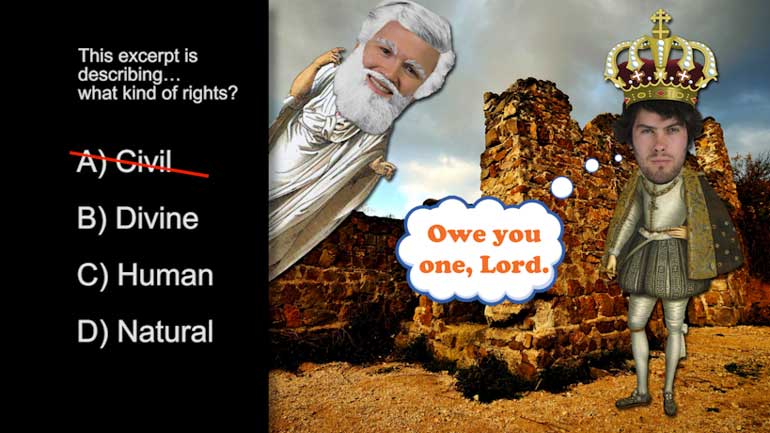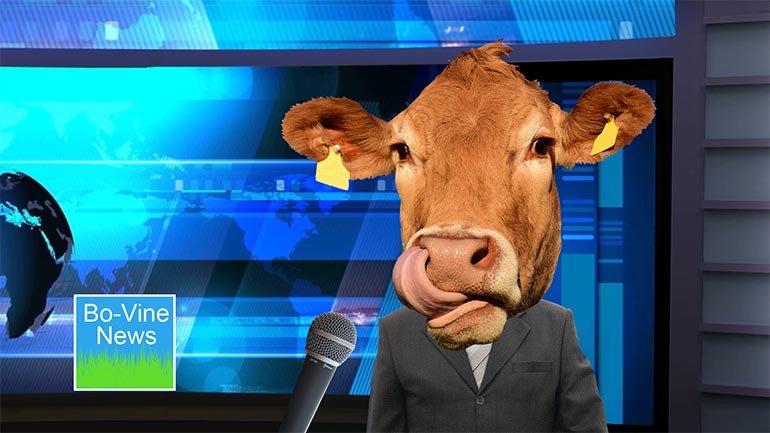ShmoopTube
Where Monty Python meets your 10th grade teacher.
Search Thousands of Shmoop Videos
Econ: What is The Phillips Curve? 3 Views
Share It!
Description:
What is The Phillips Curve? The Phillips Curve was an economic theory that held that unemployment and inflation were inverse correlations. This was considered conventional wisdom until debunked during the 1970s Carter Administration years, where Stagflation became added to the financial lexicon - a condition where unemployment and inflation rose in tandem.
Transcript
- 00:00
And finance Allah shmoop What is the Phillips curve No
- 00:07
not the filler up curve or fill up curve which
- 00:10
tracks relationship between cholesterol levels and eating high volumes of
- 00:13
cheap fried chicken's the Phillips Curve It's an economic model
- 00:16
that describes an inverse relationship between unemployment levels and the
Full Transcript
- 00:20
amount of inflation in an economy Right And you think
- 00:24
about this Okay so if there's a lot of inflation
- 00:26
means economy is really hot And so employment levels are
- 00:29
probably very high Well inverse relationship That's what Philip's curve
- 00:33
has or shows It means the two forces move in
- 00:36
opposite direction like as the amount you talk about economics
- 00:39
goes up the number of dates you get goes down
- 00:42
Okay well let's apply that principle to the Phillips curve
- 00:45
Here you have the unemployment rate They're a figure that
- 00:47
tracks the percentage of the population who are looking for
- 00:50
work but cannot find a job Ah high unemployment rate
- 00:54
means a lot of people are out of jobs It's
- 00:56
a sign that the economy is weak Bread lines hoovervilles
- 01:00
thirty year old's moving back in with their parents You
- 01:02
know all kinds of disasters Meanwhile a low unemployment rate
- 01:06
means that nearly everyone who wants a job has one
- 01:09
You know it's a good sign for an economy but
- 01:11
well then you have inflation Usually inflation remember is a
- 01:15
measure that shows the rate at which prices are rising
- 01:18
across an economy High inflation prices rising quickly Things get
- 01:22
more expensive It's tough on old people particularly old people
- 01:26
Consumers Yeah each time prices go up people can't afford
- 01:29
fewer pork rinds or superhero bobble heads or whatever they're
- 01:33
looking to buy for ten bucks on the other side
- 01:35
There's low inflation like when prices air rising slowly if
- 01:39
at all A little bit of time Relatively stable currency
- 01:43
relative to everything else Easy for people to buy stuff
- 01:46
And businesses can make long term spending plans without worrying
- 01:50
a lot about their currency being valued last in the
- 01:53
future and all that stuff So under the Phillips curve
- 01:55
theory unemployment and inflation have an inverse relationship When unemployment
- 02:00
is high inflation will be low Meanwhile when inflation is
- 02:04
high unemployment will be low writes a teeter totter Well
- 02:08
the Phillips curve is named after an economist named William
- 02:10
Phillips He first published his theory in the nineteen fifties
- 02:13
well fun facts about William Phillips He was born in
- 02:16
New Zealand and his real first name was Alban Okay
- 02:20
moving on the mechanics behind the Philip's curve Work like
- 02:22
this There was a high level of aggregate demand in
- 02:25
an economy meaning that people have cash and are looking
- 02:27
to buy stuff all the pork rinds and superhero bobbleheads
- 02:30
and you know whatever To get everybody all the stuff
- 02:32
they want to buy Companies have to hire more people
- 02:34
Teo make this stuff Unemployment rates fall is Mohr People
- 02:38
get hired And meanwhile the additional demand drives prices higher
- 02:42
Rising prices Yeah that's the definition of inflation Inflation high
- 02:45
unemployment low Phillips curve in action All right now the
- 02:49
other side aggregate man is low People don't have money
- 02:51
to buy stuff People have to ration their intake of
- 02:53
pork rinds and cut back on their purchase of superhero
- 02:56
bobbleheads Companies don't need as many workers they don't hire
- 02:59
They even lay people off Unemployment then gets high Meanwhile
- 03:03
without much demand there's no upward pressure on prices and
- 03:06
inflation is low Yet Philip's curve in action again Well
- 03:09
the Phillips curve informs a lot of economic decision making
- 03:12
It gets a lot of use in the real world
- 03:13
So let's just take the United States is an example
- 03:15
Here in the U S The main organization in charge
- 03:18
of keeping the economy humming is the Federal Reserve It
- 03:21
sets what's called monetary policy basically deciding how much money
- 03:25
there is and how fast it's allowed to move through
- 03:28
the economy The Fed has two stated goals Keep inflation
- 03:31
under control and keep unemployment as low as possible Well
- 03:35
you'll notice the Phillips curve problem here The feds trying
- 03:37
to have it both ways Inflation low unemployment low under
- 03:41
the Phillips curve theory Well you can't really have both
- 03:43
at once So in practice the Fed is constantly adjusting
- 03:46
to stay in the sweet spot They're like trying to
- 03:48
keep the perfect water temperature in the shower When the
- 03:51
economy is sluggish and unemployment is high the Fed will
- 03:54
launch some inflationary policies like good While turning up the
- 03:57
hot water They lower interest rates and put more money
- 04:00
into the system It's then easier to borrow money and
- 04:02
easier for companies to invest right lower interest rates of
- 04:05
capital Cheaper unemployment then goes down But inflation starts to
- 04:08
rise well Once inflation gets a little too strong the
- 04:11
Fed will crank up some cold water higher interest rates
- 04:14
borrowing and investing then get more expensive less money moving
- 04:17
around inflation then comes under control But there's a risk
- 04:21
that unemployment then starts to rise But the Fed is
- 04:24
constantly going back and forth Keep a reason will bounce
- 04:26
on the film's curve Tradeoff This management is complicated by
- 04:29
the fact that the bed policies take a little time
- 04:31
to work their way through the system Right there's lag
- 04:34
when Fed sets policy and then he actually see the
- 04:36
numbers in actual data that's coming through the pipeline The
- 04:39
Fed doesn't just wave a wand or push a button
- 04:42
and bam the economy is fixed right takes time So
- 04:45
there's a problem here It's not clear that Philip Curve
- 04:47
works in the long term There's a fair amount of
- 04:50
evidence that it works under most conditions in the short
- 04:53
term But in the long run many economists feel the
- 04:55
Phillips curve starts to fall apart In this anti Phillips
- 04:58
conception Well the rate of inflation is decided by monetary
- 05:02
issues The amount of cash floating around in an economy
- 05:05
unemployment doesn't really play a role Meanwhile long term employment
- 05:09
is the result of economy wide levels of supply and
- 05:12
demand for human labor It means you can't just inflate
- 05:15
your way out of every high unemployment situation It's a
- 05:18
bummer If you happen to run the Fed it means
- 05:20
situations can come up for which there's no clear Phillips
- 05:24
playbook Well the U S learned this lesson the hard
- 05:26
way in the nineteen seventies the time of leisure suits
- 05:28
and you know getting into drunken fights with Keith Richards
- 05:31
at Studio fifty four and the time of something known
- 05:34
as stagflation Well during this time the U S Economy
- 05:38
experienced stagnant growth like barely any complete with relatively high
- 05:42
unemployment mean while at the same time the country saw
- 05:45
high inflation rates high unemployment high inflation rial Philip's curve
- 05:50
conundrum We'll eventually the feds solved the problem by jacking
- 05:53
up interest rates The move got rid of the inflation
- 05:56
but it also contributed to basically a recession Once inflation
- 06:00
slowed the economy was able to resume growth again And
- 06:02
we got the boom years of the Reagan nineteen eighties
- 06:05
aerobics outfits and boom boxes Yeah and Keith Richards probably
- 06:09
still getting in drunken fights except maybe now they happened
- 06:12
at the mall or the nurse's office or something like 00:06:14.861 --> [endTime] that
Up Next
GED Social Studies 1.1 Civics and Government
Related Videos
What is bankruptcy? Deadbeats who can't pay their bills declare bankruptcy. Either they borrowed too much money, or the business fell apart. They t...
What's a dividend? At will, the board of directors can pay a dividend on common stock. Usually, that payout is some percentage less than 100 of ear...
How are risk and reward related? Take more risk, expect more reward. A lottery ticket might be worth a billion dollars, but if the odds are one in...




